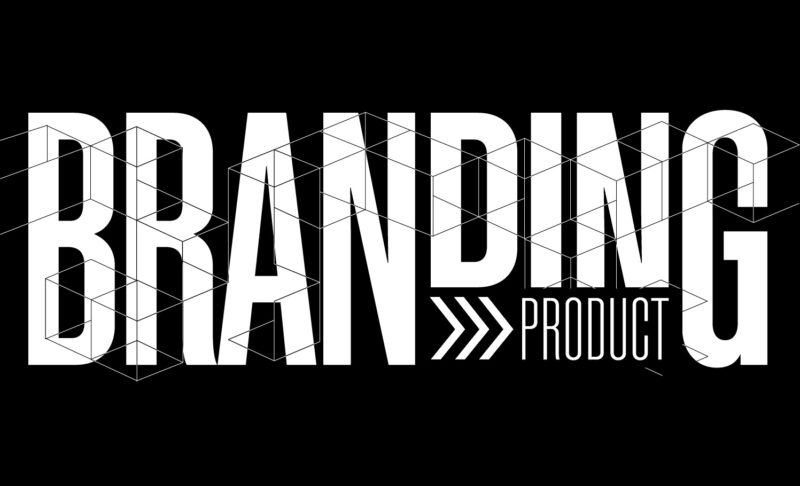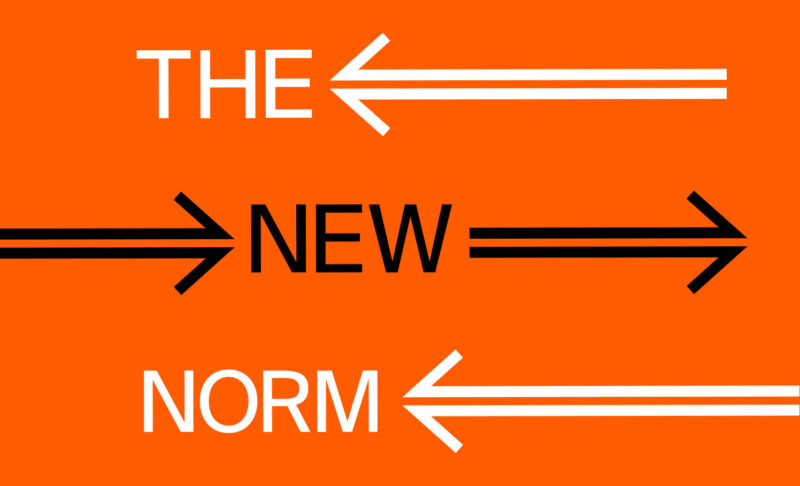How Has Branding Changed In The Digital Revolution?
Related Services
Credits
Writer: Dejan Kvrgic

The digital age is an exciting time to be alive, one brimming with opportunities to grow your business and build your brand online.
However, the struggle to remain relevant in the world bursting with new media channels and borderline aggressive engagement, where information is the largest commodity, is real.
There’s been a fundamental change in how consumers connect with brands, observed in the consumer behavior and buyer-seller relationships. The touchpoints have shifted and reorganized, and that, for marketers, means that the “old way of doing business” is no longer sustainable.
In that sense, no other industry has experienced the digital revolution disruption the same way the marketing industry has. After celebrating three decades of the World Wide Web, it’s time to look at how has branding changed in the digital revolution. As brands are expected to adapt and realign their marketing plans, a thoughtful reflection on the digital age seems fitting.
A Brief History Of Digital Marketing As We Know It
The digital revolution transformed the world as we know it. But to grasp its impact on modern-day marketing, it’s vital to understand what came before. How have businesses leveraged the available marketing tools over the centuries? How did marketers get to where they are today?
Take a look at the history of human society. This need to find new ways to connect customers with products and services through marketing and branding is anything but new. It might have been a rudimentary form of marketing, but marketing nonetheless.
It wasn’t until the 1990s, when the Internet took center stage, that marketing channels’ growth took off, though. And when smartphones and social media, like Facebook, entered the picture soon after, in the early 2000s, things picked up speed even further.
The opportunity for businesses to engage their consumers through various touchpoints and promote their product or service through these new channels changed the game forever. Where print ads, billboards, TV commercials, and radio once ruled the marketing landscape, websites, search engine optimization, social media, content management, and on-the-go engagement took over and moved the world online.
Marketers had to adapt their strategies to navigate the Internet’s massive trove of content, get their messages across to customers, and give companies a competitive edge as new platforms and markets emerge. Enter branding in the digital age. Enter branding in the digital age.
Branding In The New Digital Marketing Landscape
Word-of-mouth marketing of products and services expanded to the online space, and digital assets, like search-engine-optimized website content and social media that prioritize speed and accessibility, became the foundations of digital marketing. The adoption of information technology and digital brand marketing has come a long way over the last three decades. From marketers trying to tap into the online space’s vast potential to new brand-building methods and targeted marketing tools, adaptation to change was vital in the new online-based landscape of marketing.
#1 Instant Communication And Customer Service That Never Sleeps
The buyer-seller relationship has always been critical. However, the Internet has snatched the power from the marketer and placed it into the consumers’ hands, giving them a voice and a way to be heard.
What brands used to see as a one-way street, pushing impersonal mass communication, has become a two-way, consumer-driven highway. It’s no longer a matter of one-way advertising, but a dialogue, and one that is more customer-centric than ever.
Another interesting phenomenon that erupted from the era of digital technology, internet traffic, new customer touchpoints, and instant communication is the “always-on” mentality.
Customer service doesn’t get to sleep much in the digital age. Businesses are expected to instantly address and resolve issues, creating what would be best described as an “always-on” relationship with consumers.
#2 Being More Human And Fostering Intimacy As Your Brand’s Biggest Asset
Businesses are no longer talking at their consumers. The marketing practice that left no opportunity for interactions between buyers and sellers, the one that has been around for decades, doesn’t cut it in the digital era. You have the means to engage with your customer base through social media, talking with them, not at them.
Brands aren’t people, but they are people-powered. Let that show a little. Today’s consumers know better than to fall for marketing that is void of any values and authenticity and will perceive it as shallowness.
Your brand’s success should be more than skin-deep. It goes beyond pretty colors, a great logo, or a creative tagline, and, as big of an impact social media has in all this, it goes beyond likes and followers, too. Fostering authenticity and intimacy, allowing your brand to be more human, is the secret sauce to success.
#3 Tremendous Amounts Of Data Allow For Highly Relevant Interactions
Content is king; that’s the mantra everyone knows by heart. Great content indeed engages audiences in the digital world. But it’s the brands that manage to get a firm grasp on who their users, viewers, and customers are that get the biggest slice of the pie.
Technology altered how businesses market their products and services. Marketing campaigns have moved away from tangible methods of reaching customers into the realm of social media, search engine optimization, and digital technology.
There’s no time for long-term measurements and broad insights. Marketers gather information about customers and see engagement in real-time and need the analytics to keep up with the results of these digital marketing campaigns.
#4 Demand For Total Transparency As The New Normal
The hyper-connected digital age, brimming with data breaches, fake news, and privacy concerns – the era of distrust – has led marketers into an uphill battle to earn the consumers’ trust. Modern-day clients and customers demand total transparency as the new normal.
The change in the consumer’s profile outlines a customer who wants to know everything about the businesses, from manufacturing to ways it gives back to society. Almost every business, and even entire industries, feel the pressure of this rapidly shifting conversation that goes from accidental revelations to total and utter transparency.
One way businesses can adapt to this and use the moral dimension of consumers’ buying decisions is by turning transparency into a marketing strategy. Brands that “get it” have an opportunity to gain the clients’ trust and capitalize on the growing desire for total transparency and accountability.
#5 Large Marketing Budgets No Longer Equals Success
Marketing used to be a relatively straightforward, easy-to-grasp concept, at least in the sense that whoever had the most significant marketing budget usually ruled the marketing landscape. If your business could reach more people through marketing campaigns and build better brand awareness, you were more likely to achieve success, simple as that.
With the widespread use of the Internet and social media channels, we’re seeing this new era where everyone can partake in the marketing landscape.
That’s not to say that a huge budget doesn’t put a company at an advantage; it does. However, it is no longer a deciding factor. Companies are competing based on marketing strategy, skills, and service, making it possible for even the smallest companies to enter the race.
#6 A Level Playing Field
Digital marketing channels, and the changes in consumer behavior that came with it, make it easier for the brands to reach the target audience and get their message across. And as a direct result of that, the playing field is level now more than ever before.
It’s interesting to see how the new age of digital marketing somewhat diminished what was once considered the inherent value of a big brand name. A small company now has every bit as much chance to become a success story as a “big,” well-established brand does.
Digital marketing channels and communication changes give as much coverage to a small business as they do a big one, allowing them a fair shot at their share of the marketing pie. Being a large company is no longer enough to see the sales spike; marketers have their work cut out for them.
#7 Ad Blindness In The Internet Era
Ads are unavoidable parts of our digital lives. Whenever people log onto a social media platform such as Facebook, open newsletters, or visit a website, they are bombarded by thousands upon thousands of ads.
If you thought billboards and print ads are getting ignored, you need to hear about ad blindness:
Rather than processing the message, the consumers will, subconsciously or intentionally, turn a blind eye to your digital marketing efforts. They will continue browsing the website, but they will solely focus on the content, products, and services that interest them, not the ads.
Marketers need to adjust to this and realize that an ad can no longer be a mere ad. Traditional ads are dead, and it’s the Internet that killed them. Businesses need to offer something more substantial than a boring, intrusive ad to the customers before they even stand a chance of gaining conversion.
#8 Brand Loyalty Has Taken A Historic Plunge
Businesses have more ways than ever to track real-time results and gain measurable insights into consumer behaviors. And yet, there has been a paradigm shift in customer retention, and ironically enough, we’re witnessing a historic plunge in brand loyalty.
The new digital marketing trends and brand loyalty shouldn’t be two mutually exclusive terms. However, marketers shouldn’t expect educated and empowered consumers, who are spoiled for choice, to be loyal followers. They will likely choose convenience, cost, and accessibility, over loyalty.
What was one of the cornerstones of a traditional marketing strategy now lies dismantled by the changes happening within the customer base itself. Companies have to adapt their business model and marketing efforts to make their presence more compelling and strengthen that bond while retaining some of the “old-fashioned” values.
#9 Brand Consistency Across All Channels, Online And Offline
Brand consistency refers to aligning all representations of the brand and marketing assets with a set of pre-defined guiding principles, including the brand’s identity, values, and guidelines.
Mastering the art of effective branding is about achieving consistency in the messaging, core values, tone of voice, and elements of style and maintaining it across all channels. It’s about making your brand instantly recognizable in the changing consumer landscape.
However, it’s hard to remain “on-brand” when you have “traditional” and digital marketing teams working out of sync rather than developing a unified strategy with consistent messaging.
You need to push the same, unified message, in the same way, across all channels and touchpoints, both online and offline. That’s how you create a sense of consistency capable of stirring up feelings of authenticity and familiarity in the consumer.
Given that brand loyalty is at an all-time low, you can’t risk having even the slightest discrepancies in branding that could impact the consumers’ trust.


